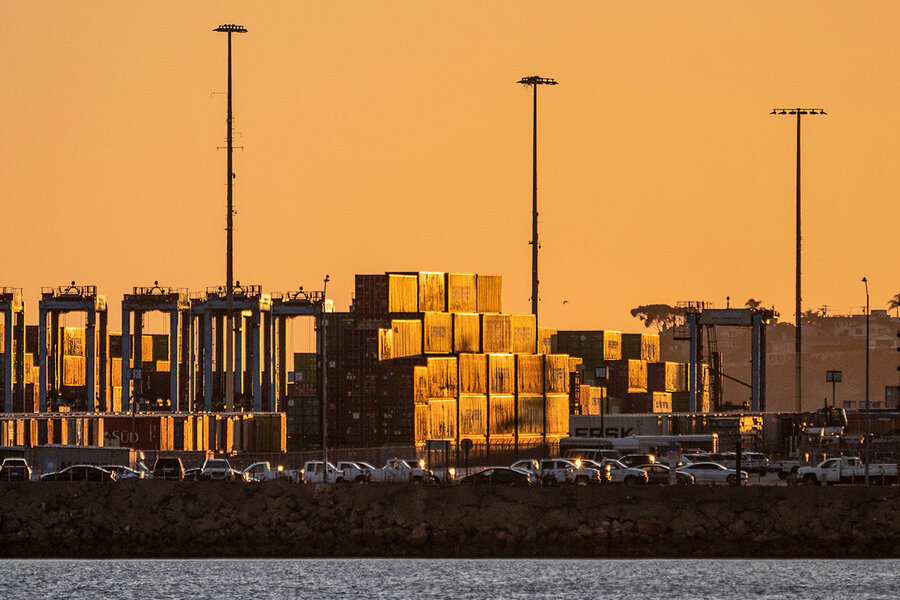Task for Fed officials: Thread a needle on inflation, recession
Loading...
Wisdom. Balance. Caution. The descriptions might vary, but something along these lines is what policymakers at the Federal Reserve need right now.
“There is a trade-off,” says economist Rajeev Dhawan, between tamping down inflation on the one hand and seeking to avoid a recession on the other. Fed officials know this, but walking that fine line doesn’t look easy at the moment.
The inflation problem is all too evident at the nearest gas station or grocery aisle, and in surveys on consumers’ outlook. Amid a 40-year high inflation rate of 8.5%, the Fed has pledged to act forcefully. At a meeting today it raised short-term interest rates another half a percentage point, and also pledged to withdraw some stimulus by reducing its balance sheet of bond holdings in the months ahead.
Why We Wrote This
The Federal Reserve is tasked by Congress with seeking both price stability and full employment through its policies. Given current economic uncertainty, its decisive response to inflation today may need to be balanced by caution.
The challenge is: There’s a lot of uncertainty about how quickly inflation could ease and also about the economy’s overall strength. The first three months of the year saw a surprise decline in gross domestic product. Home prices appear to be flattening as mortgage interest rates respond to the Fed’s emerging policy shift. Pandemic stimulus programs from Congress are largely in the rearview mirror.
“Forgotten in the near term hawkishness is that we likely passed peak inflation and the issue is whether we end the year closer to 4% or 2%,” University of Oregon economist Tim Duy tweeted Tuesday.
Yet Professor Dhawan, director of the Economic Forecasting Center at Georgia State University, notes that the Ukraine war and COVID-19 lockdowns in China have created new risks for the world economy – including for the supply of imported goods in the United States.
A few months ago, he thought the chance of curbing inflation without causing a recession was about 80%. Now in his view it’s more like 50%.
After today the Fed’s policymaking committee, composed of presidential and regional appointees, has five more policy-setting meetings this year.
“It is all meeting by meeting,” Dr. Dhawan says. “They will just watch and see the lay of the land, right? Inflation always is a little bit slow in coming down. So they don’t need to overreact.”








